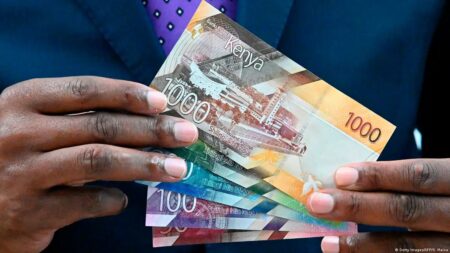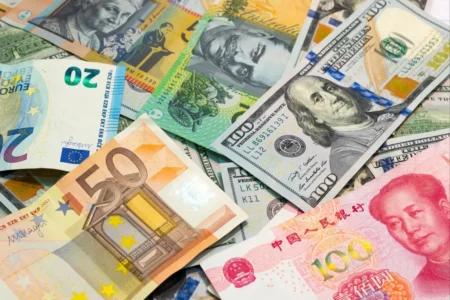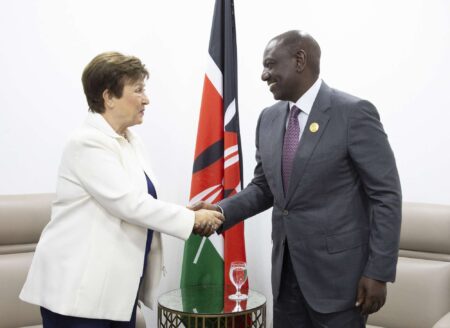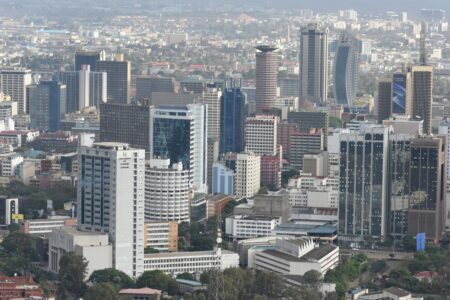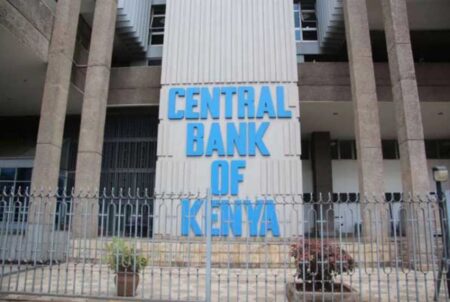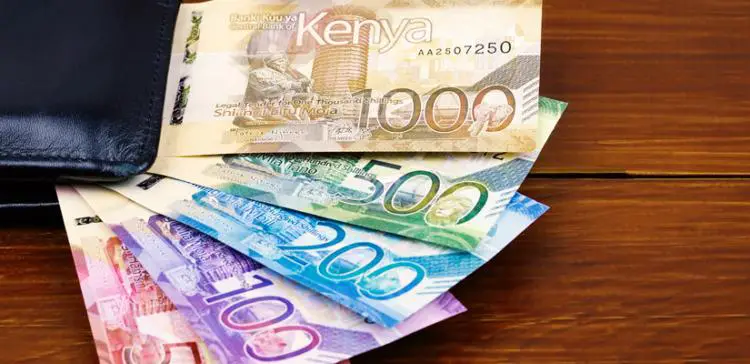- The Just Energy Transition in Africa: Lessons from South Africa and Senegal
- Mukuru Wallet poised to bolster financial inclusion in Zimbabwe
- Tanga port sailing toward becoming Tanzania’s second-busiest cargo terminal
- Tanzania’s roadmap to universal energy access by 2030
- World Bank, WHO, and Unicef in $82M deal to revive healthcare system in wartorn Sudan
- Empowering Africa: Energy leaders gather in Tanzania for key industry summit
- Digital farms: The new frontier for African agriculture
- UAE readies to champion sustainable health during 2025 Local Production Forum
Browsing: Central Bank of Kenya (CBK)
- The cost of borrowing in Kenya has been going up since October last year, when it was at 10.50 per cent, before two consecutive raises.
- This means banks are likely to adjust their interest rates upwards, pushing the cost of borrowing beyond the reach of many.
- The majority of bank rates are currently above 20 per cent, amid a high default rate as banks struggle with Non-Performing Loans (NPLs).
Higher interest rates to raise the cost of borrowing in Kenya
The cost of borrowing in Kenya is set for yet another rise if banks are to factor in the latest Central Bank of Kenya increase in the base-lending rate.
The Central Bank of Kenya (CBK) has raised borrowing costs to highs last seen nearly 12 years ago, as it moves to try and contain the country’s inflation, which has started to pick.
On Tuesday, the Monetary Policy Committee, CBK’s top …
- Kenya’s distressed debt levels are pushing the country in a tight spot following years of successive borrowing, the Institute of Public Finance (IPF) says in its latest Macro Fiscal Analytical Snapshot Report.
- This is compounded by the inability of the private sector to create woefully insufficient jobs for millions of young people entering the job market annually.
- The report notes that since 2014, persistent high fiscal deficits have resulted in a swift escalation of public debt, now standing at 70 per cent of the GDP.
Kenya risks missing its economic growth targets in the medium-term as the country grapples with high debt distress and a deteriorating macroeconomic operating environment.
According to the Institute of Public Finance (IPF) in its latest Macro Fiscal Analytical Snapshot Report, the country finds itself in a tight spot following years of successive borrowing.
This is coupled with the inability of the private sector to create …
- Kenyan Shilling, which has been on a free-fall against the Dollar since mid-last year, fell to a record-low of 162 to the greenback with projections it could tumble further into the year.
- The unit has shed over 31 per cent of its value to the dollar year-to-date, as the Fed rate hikes in the US took a toll on currencies across the different markets.
- According to Kenya National Bureau of Statistics (KNBS), the Kenyan shilling also ceded ground against the Euro, Pound Sterling and the Japanese Yen.
The Kenyan government is facing a major headache as the country’s currency continues to fall against the US Dollar and other major currencies, hitting a new low this week.
Kenyan shilling, which has been on a free-fall against the dollar since mid-last year, fell to a record-low of 162 to the greenback with projections it could tumble even further this year.
The local…
- Kenyans in the diaspora sent home $4.19 billion in 2023 as remittance inflows to the East African country hit an all-time high.
- The high numbers signal that Kenyans living and working in the diaspora defied the inflationary pressures they still experienced to send more money back home.
- Since the height of the COVID-19 pandemic, many Kenyans in the diaspora have had to cut spending to navigate inflationary pressures and afford to send money back home.
Kenyans in the diaspora sent home $4.19 billion in 2023 as remittance inflows to the East African country hit an all-time high, boosting foreign exchange reserves and support for families in the wake of tough economic times.
According to the Central Bank of Kenya (CBK), the figures are up by four per cent compared to the $4.02 billion sent in 2022.
“The inflows were strong in December 2023 at $372.6 million compared to $355.0 million …
- The IMF loan to Kenya provides a much-needed shot in the arm as it navigates debt repayments, including the $2.0 billion Eurobond maturing in June this year.
- The country is expected to repay Eurobond debts of $1.96 billion in 2024, $880 million in 2027, and $978 million in 2028.
- Debt repayment has pressured Kenya as it consumes more of forex reserves and ordinary revenues, wiping out gains in diaspora remittances and tourism earnings.
The IMF loan to Kenya
The International Monetary Fund (IMF) has approved a $684.7 million loan facility for Kenya, giving the East African country the much-needed support to navigate financial pressures amid a maturing Eurobond.
The funds are part of the $941.2 million Extended Fund Facility (EFF) and Extended Credit Facility (ECF) program approved in April 2021 and extended by 10 months in July 2023 to April 2025.
The first review under the 20-month Resilience and Sustainability …
Business conditions in Kenya remained in a steep decline halfway through the final quarter of the year, according to the latest Purchasing Managers’ Index (PMI) by S&P Global.
This comes amid sizeable falls in output, new orders, and employment in November, as indicated by the PMI, which closely monitors market-moving economic indicators, covering more than 30 advanced and emerging economies worldwide.…
- The Central Bank of Kenya benchmark rate has gone up to 12.5 per cent from 10.5 per cent.
- Developing economies including Kenya are paying dearly for geopolitical tensions.
- The current US policy rate at 5.25 per cent -5.5 per cent is the highest in 22 years, exerting pressure on economies.
Borrowers in Kenya are facing the prospect of more expensive loans following the country’s central bank’s decision to raise its base lending rate to a near 11-year high of 12.50 per cent. This marks an increase from the 10.50 per cent rate that has been in place since June this year, when it rose from 9.50 per cent due to a rise in non-performing loans in the banking sector.
The hike in rates occurs as Kenya, along with other economies in the region, continues to grapple with the impact of global factors, including elevated interest rates in the United States. …
Nairobi will continue purchasing fuel on credit from three state-owned Gulf oil marketers until December 2024 in a plan the government is banking on to ease piling pressure on Kenya’s forex reserves.
The move comes in the wake of high expenditure on oil imports even as Kenya remains a net importer grappling with a widening trade deficit that hit $10.8 billion last year. Last year, Kenya’s expenditure on imports rose by 17.5 per cent to $16.9 billion (KSh2.5 trillion), despite growing export volumes.…
- The Kenyan shilling has fallen to a new low of 140.04 against the US dollar.
- Central Bank of Kenya data shows the unit is also losing to other major currencies including British Pound and Euro.
- Last year, the Kenyan shilling depreciated by about 7.5 per cent against the US dollar, the UAE dirham (7.5%), Saudi Riyal (7.4%) and the Chinese Yuan (3.1%), the Kenya Economic Survey 2023 shows.
As developing market currencies continue to suffer from the worldwide increase in interest rates, which is being spearheaded by the US Federal Reserve, the Kenyan Shilling has dropped to a historic low in relation to the US Dollar.
The Fed has increased the benchmark rate ten times in a row, or a total of five percentage points, since March of last year. In the last 40 years, these increases are the most abrupt. In an effort to combat US inflation, interest rates
- The government of Kenya is deploying measures to protect local industries from the onslaught of cheap imports.
- Kenya’s $26.4 billion FY2023/24 budget is an increase from $23.6 billion plan for the fiscal year ending June 30.
- The country is, however, facing high inflation, ballooning debt, and a high rate of joblessness.
President William Ruto’s first $26.4 billion budget for the FY2023/24 starting July 1st seeks to boost job creation, power growth of industries, and reduce borrowing.
Kenya’s $26.4 billion FY2023/24 budget is an increase from the $23.6 billion plan for the fiscal year ending June 30. East Africa’s economic powerhouse, Kenya, continues to struggle with growing inflation, skyrocketing debt, and a high unemployment rate.
Job creation targets Kenya’s youth
The lack of enough jobs is disproportionately affecting the country’s young people. The economy is also struggling from the impact of external shocks. For instance, Kenya is hurting from the Russia-Ukraine …






